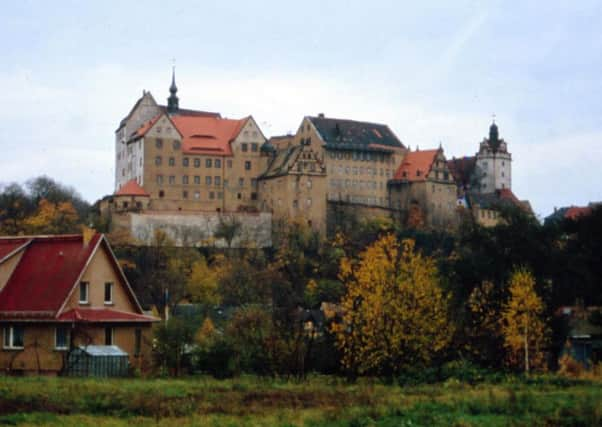John McLellan: What my time in Colditz taught me about tartan tat


Like thousands of others, as a ten-year-old I was enthralled by the tales of the PoW’s derring-do, but the castle was in East Germany and I read an interview with some ex-inmates – to promote a TV drama – which highlighted how hard it had been to get permission for a visit from the authorities.
But the collapse of Communism meant anyone could go and I persuaded my girlfriend it would make a fun holiday so we drove there, our three-year-old Vauxhall Cavalier feeling like a Rolls Royce next to the Trabants, Wartburgs and Ladas as we bumped our way along roads hardly touched since before the war.
Advertisement
Hide AdAdvertisement
Hide AdTourism was virtually unknown in East Germany, certainly outside Berlin. Beyond the big towns like Chemnitz, where the wastelands created by Allied bombers had been filled with grim Russian offices and accommodation blocks, time had stood still. Not 1945 but 1933.
Driving through small towns was like going onto a movie set: few cars, not many people about, the odd poorly stocked shop in need of a good lick of paint, few places to eat and staffed by wary locals. No advertising and, in fact, very little colour at all. Waldheim, a town best known for its prison where both Nazi and Soviet era political prisoners were held, was jaw-dropping in its greyness.
So what’s all this got to do with Edinburgh? Well there are certainly parallels between East German and Edinburgh roads, but with another successful Hogmanay and the debate about the value of tourism reignited by Alexander McCall Smith’s plea for action to halt the proliferation of Royal Mile tartan souvenir shops, it made me wonder about life without tourism.
The sector here is under fire on all sides; shops aimed at visitors are destroying our historic streets, short-term lets and Airbnb are threatening communities, too many hotels are squeezing out opportunities for local businesses, tourism jobs aren’t “real” jobs… something, as they say, must be done. But what exactly? For example, if a shop is designated as non-food retail then there is nothing to stop the sale of cheap kilts, pewter quaichs, or tinny bagpipe music if enough people want to buy them. Some might argue that a £50 bottle of whisky and a £100 cashmere cardie sold on the High Street is just tourist tosh for toffs and just because visitors buy it by the bushel doesn’t make us like shortbread any less.
Advertisement
Hide AdAdvertisement
Hide AdEven if numbers could be limited what would take their place? Look at any shopping street where the tourists don’t venture and the answer is charity shops. If the problem is saltire rugby shirts and See-You-Jimmy hats swinging in the wind, again for non-permanent displays there is not much in law the council can do.
The argument goes that if more people actually lived in the middle of town then different businesses would be sustainable, but by that token there would be more “proper” shops in places like Morningside. So what then? Ban supermarkets and online shopping?
The contrast between those grim East German places in the early 90s and the blazing colour, noise and seas of people which is Edinburgh at Hogmanay could not be greater. The German Market isn’t supposed to be ironic, but I have little doubt their cities would give their last wooden soldier to have what we have here. Most Germans have never heard of Colditz Castle, but they painted it up, refurbished the chapel and created a new museum. To attract British tourists.
